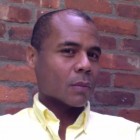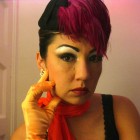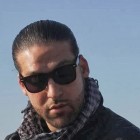Interview via Telephone
February 7, 2014
Matthew Andrews, CA+T Interviewer
Kale Fajardo, Scholar
Editor's note: This is not a direct transcript of the audio-recorded interview. Words and phrases have been edited in the interest of readability.
Matthew Andrews: How did you become interested in the study of Filipino seafaring?
Kale Fajardo: So, how I became interested in studying Filipino seafaring is that in graduate school at the University of California at Santa Cruz I was very influenced by James Clifford's book, which is called Routes: Travel and Translation in the Late Twentieth Century [Harvard University Press, 1997]. One of Professor Clifford's arguments is that travel is constitutive of culture, and so as a graduate student in anthropology, I found that the village setting is historically how culture has been defined in anthropology, and I also really loved traveling, and so I thought that Professor Clifford's idea was really interesting, and his book was also great in that it's a bunch of different essays written in kind of a different variety of styles. It wasn't the typical academic prose, so that also pulled me in. That was really interesting.
Then the other thing I would have to say is that my other professor, Lisa Rofel, who is also an anthropologist, basically encouraged us to focus on topics that we felt passionately about and were really interested in because working on a dissertation and a doctorate can take up to ten years sometimes. Especially for anthropologists, you have to perhaps learn a language or go do one or two years of fieldwork. So, that stuck with me that I better like whatever it is I am studying. One of my passions at the time, which is still an important passion for me, is thinking about the ocean, and you know, living in Santa Cruz, where the ocean is an everyday part of your life. I thought, "Well, that would be something that I could commit to studying and immersing myself," thinking about oceanic cultures and seafaring.
That led me to think about Filipino seamen in the global shipping industry because in the late 1990s a lot of the research on Filipino overseas migrant workers actually focused a lot on the women—female- or woman-identified OFWs, or Overseas Filipino Workers. Even though in Asian American studies Filipino migrant men figure really prominently in the early twentieth century, in the later part of the twentieth century, it was really the women migrants who were receiving the attention. I knew that Filipino seamen comprised about twenty percent of the shipping industry and that there wasn't a lot of research on it, and I thought that was a gap that I could address, so those forces brought me to the project.
MA: Great. Thank you. How did you get started studying Filipino tomboy masculinities in this context?1
KF: Well, the project was really thinking about how Filipino seamen construct their masculinities through their labor and through their work on ships and in ports, but one of the things that happened to me on a regular basis, since at the time of the fieldwork I was a masculine female-identified person—I am now a trans- and male-identified person—they would talk to me about tomboys that they knew or family members or relatives or neighbors. They would start telling me stories about tomboys, who are female or male transgender figures but sometimes read as lesbian. I've been reading tomboys more as transgender male or masculine figures, and I never thought it would be part of my research, but because of who I am and what I look like and just how I related to the men in this masculine way, they started bringing up these different figures in their pasts, and so those different experiences stuck with me. They happened on pretty much a regular basis when I would go to port. I'm not saying every single time, but five to ten times, these kinds of interactions would happen, and then I started paying attention to it more.
I also was telling Judith/Jack Halberstam, who wrote the book Female Masculinity [Duke University Press, 2012] and who is an established queer theorist, and Jack thought that those incidents in my fieldwork were really interesting, so he was like, "Why don't you continue thinking about that and writing about that?" At that point, those stories did not make it to the dissertation. When I became faculty at the University of Minnesota, I wrote a new essay and a chapter, which is the one that CA+T has. "Transportation" is the thinking that came out of when Jack Halberstam encouraged me to think about and theorize what I thought was happening at sea with me and also what the men were theorizing in terms of their relationship with other tomboy or male- or masculine-identified people, who could be transgender.
MA: Thank you. When reading your article included in the Sea, Land, Air exhibition, I was especially struck by your use of various writing styles, which you sort of mentioned earlier with Professor Clifford's work. The writing styles include travelogue, maybe what people may see as traditional ethnographic writing, and autobiography, to illuminate, among other things that you discuss in the article, how what is popularly seen as straight or heteronormative, like a cock fight, can be queered. So, I was wondering if you could speak more about the role this hybrid writing style played in your analysis or, at the very least, in communicating your analysis?
KF: Right. Well, so the anthro program at UC Santa Cruz is considered a postmodern anthropology program that is very much interested in the politics of representation and how ethnography gets conducted and then how ethnographies are written up. [It is a] reaction to colonial anthropology that had this very disembodied, pseudo-scientific discourse in terms of how the "native" or indigenous or local people would get described, and so there was attention to how we wrote ethnographies. In addition to Professor Clifford, Professor Anna Tsing also first combined different voices. I would say that mine probably has more of the autobiographical feel, but Clifford and Tsing are both writing in this situated way. They definitely have attention to storytelling, which I find very interesting and useful as an anthropologist, so I want to keep in mind that I am telling these different stories and how can I do it in an interesting and compelling way.
The other person that was influential [is] the literary critic Mary Louise Pratt. She has this really provocative essay where she admits or observes that she's met all these really interesting anthropologists, but she finds their books really boring [laughing]. She talks about how we can't get away from tropes, or we can try to get away from colonial tropes but [since] we're writing narratives tropes are always going to be a part of what we do. She was making a call for new tropes, and then I thought that thinking in this crosscurrents way was a way of creating a new trope and also taking her critique very seriously. Why are a lot of ethnographies really boring? And, as a writer and as a researcher/scholar, how can you make it interesting? And, even though there can be critiques of different travel writers or a particular kind of exotic optic they can have, I think as a Filipino American going back to the Philippines to do fieldwork, I wanted it to be okay and part of the story that I wasn't this outsider anthropologist going back to the Philippines. I was an outsider in one sense and then an insider in another sense. So, in order to get at the complicatedness of my positionality, it was important to tell different stories that allow me to show that I have a different relationship to the Philippines or I have a different relationship to Filipino men or to the sea or to Manila or even Oakland.
So, that's part of why I was experimenting in my dissertation on how to tell these stories in a compelling and interesting and smart way, and I'm not sure that it totally succeeds in the book. I'm still waiting for all of the reviews, but that's why in my book, some of the chapters integrate these different ways of writing and have a different voice in each chapter or at least sections of it.
MA: Well in the article, for me, I felt that the writing style was captivating and drew me in in ways that traditional academic writing—I'm a trained sociologist—so, for me, it made it much more engaging than a lot of other works I tend to read.
KF: Thanks.
MA: Thank you. What would you say is your most memorable experience while conducting your ethnographic field research?
KF: Honestly, I would give two. One: just going back to Manila and spending about ten months there. I actually did my undergrad "semester abroad" at Trinity College in Quezon City way back in 1989, and when I went back in '88-'89, that was right after the Marcos dictatorship had been toppled. So, that was a really interesting time to live in Manila. Then when I went back in '98-'99 to do my fieldwork, Manila was changing, and it's still changing. It was just interesting to be a little bit of an older adult and getting to know some of the interesting activists and scholars and journalists who were in Manila at the same time. So, I felt like that was definitely memorable to kind of reconnect with Manila and have this ongoing relationship to it as an undergraduate student and then later as a graduate student.
But also, as I mention in the "Transportation" essay, I footnoted all the different times I went back as a child too. So, I feel like I have this ongoing relationship with the city. It's definitely not like an everyday experience like a local Manileño, but I feel like having a transnational or translocal relationship with Manila over my lifetime. It's something that's really meaningful to me, and so that was really wonderful to get funding and to be able to maintain that relationship with the city and the place, and then since, learning about the different aspects of the city, which is the port city side of it, and learning more about Manila's maritime history was also really great.
[Two:] Then I think definitely going out to sea was a memorable part of the trip, and there's times now in Minneapolis where I really miss being on the water, even though I've only experienced it for that transpacific voyage. But, I really enjoy being in an all-male space. I mean, a primarily all male space. There was a heterosexual German couple on the ship. But, I felt like the Filipino men and the men from Kiribati, they just had this… they had bonded, and when I talk [about] pakiisa [oneness] or kapwa [togetherness] or this collective feeling of these men who are workers but the ship is also their home, and I did get a sense of that from them, even though as I write in chapter three—that chapter is called "Ethnography in Blue"—some of the loneliness and feeling the isolation that the men experience. So, I feel like that particular voyage was also really meaningful just to really see the friendship and the way that these Filipino men figured out how to work together in a[n] alienating work context, but there was this group feeling that I really enjoyed that I think about and I miss a lot in my day to day life now.
MA: I also read that one of your more recent works has examined Filipino tomboy masculinities in the North American Great Lakes region. Is that correct?
KF: Yes.
MA: Could you speak a bit about this, especially how it relates, or not, to your work on Filipino seafaring.
KF: Okay. Well, in my first book I was really thinking about crosscurrents in this Pacific context, being in California, in Oakland, being in Manila and that transpacific situation. In 2005, I started working at the University of Minnesota-Twin Cities, and I've been trying to figure out ways to connect with water and continue to theorize and think through water, and the Great Lakes [are] about three hours north of Minneapolis and specifically Lake Superior is up there. I don't know if you've been to any of the Great Lakes, but they are kind of oceanic. They are sometimes described as inland seas. They have their own very rich maritime history. Like, the kinds of ships that are found on the Great Lakes are actually called "lakers," That's why the Los Angeles Lakers used to be the Minnesota Lakers. That comes from the kind of ships, from my understanding, that ride the waters of the Great Lakes. So, I have been trying to bring my expertise and interest in thinking about maritime issues and seafaring to the present context and geography that I'm in. So, the Great Lakes are that place where I wanted to think about similar issues and then also learn about what's going on in the Great Lakes region.
One of the people that I cite in the "Transportation" piece is Nice Rodriguez, a Filipino-Canadian tomboy who lived in Toronto for many years. I don't have the exact dates. So, Nice Rodriguez wrote this collection of short stories called Throw It to the River, and water is actually also fairly common in some of the stories. Like, I think that Rodriguez is talking about the Pasig River and Manila Bay, and then the fact that Rodriguez was situated in Toronto, which is on Lake Ontario, which is one of the Great Lakes. I had footnoted Rodriguez, but I hadn't really done anything with Rodriguez's short stories, and I'm not really a literary critic type person, but I just decided to see if I could develop an analysis on what Rodriguez is doing with these short stories.
At around the same time spontaneously Martin Manalansan, a Filipino anthropologist at the University of Illinois at Urbana-Champaign and author of Global Divas [Duke University Press, 2003], said, "We're going to be having this conference. It's called 'Queering the Middle' and thinking about the Midwest as a particular geography and then queering the Midwest," and "Do you have anything?" I said, "Well, I don't have anything about the Midwest, but if we consider the Great Lakes as part of the Midwest (but it's also part of Canada), I am starting to think about Nice Rodriguez's work. What do you think of that?" He was like, "Oh, that sounds great." So, he invited me to this conference, and so that was when I first delivered a short paper. I think it was a ten page paper on Nice Rodriguez's essay. It was well received. So, I'm thinking about the Great Lakes as a water border zone and then also thinking about what Rodriguez says with water and masculinity and tomboy masculinity and this transnational experience that can move from, say, Duluth, Minnesota to Toronto to Manila but thinking through water. So, that's what that piece is about.
Then, the organizers of that conference at Illinois pitched the idea to a number of presses, and that [proposal] was supported by the journal GLQ, which comes out of Duke University Press. They just published several of the essays that came out of the "Queering the Middle" conference. Actually that conference happened in Fall of 2010, but my essay [is] in that special issue. "Queering the Middle: Race, Region, and A Queer Midwest," I believe, is the subtitle for the special issue, so that just came out this past month in 2014.
The other thing I would add is, since I live in Minneapolis, in addition to thinking about the Great Lakes, I also have been thinking a lot more about the Mississippi, which is obviously an important "American" river. The river actually runs through our campus. It divides the Twin Cities campus, like East Bank and West Bank, and so I developed a freshman seminar called "Reading the Mississippi: Race, Place, Gender, and Empire" that thinks about different ways of thinking about water. I've moved a little bit away from the ocean, and I'm starting to think more about the river. So, the Mississippi and the Great Lakes are two areas that I've been thinking about, and I still have projects in the Philippines, but that's how I maintain my connection to water.
MA: Great. Thank you. To close, what would you say inspires you in your research and why?
KF: Oh [laughing].
MA: It's a big one, but we like to close our interviews with this kind of open question. It seems to elicit some really interesting answers.
KF: I think what inspires me are places. Anthropologists think of place because the kind of methodology [ethnography] we use is very embodied. You're supposed to participate, observe, and perhaps live in the place, but I'm probably a little bit of a geographer. Geographers do tend to think of place a lot more, so I'm just really inspired by places that I either live in or travel to and especially when I find the weird little histories or unknown things about it. [It] makes me want to poke around more and figure out what's going on with these places. And, usually there's a Filipino connection.
Like, another watery place that I'm looking at right now is Astoria, Oregon. I grew up in Portland, and I have always found it really strange that Oregon doesn't figure that prominently in Asian American history or Asian American studies. It's like you learn about California and Seattle and even Alaska, but Oregon gets jumped over a little bit. I don't have an answer for it, but right now I'm like, "Why is that?" I had this hunch that Filipinos were in Astoria working in the canneries, and I was actually right. So, I've been doing some archival work and thinking about Filipino men in Astoria, and that's also a watery place because Astoria is on the mouth of the Columbia River and also close to the ocean. [It's] not quite the Bay Area, but it's sort of where the river meets the Pacific. And, so as a Filipino person who grew up in Oregon, I am fascinated by that place and how it has this history that not a lot of people know about, and then there's a water connection. I'm interested in these watery places and watery figures that tend to be marginalized, and that's really what inspires me to read more or investigate things from that sort of thing.
MA: That's really interesting. Thank you for sharing also a bit about your current work.
KF: Sure.
MA: Those are the questions we had. Is there anything you'd like to add at all?
KF: I will add a personal, like young person, experience that may be useful for young people that read this. When I was in sixth grade—it's a little bit embarrassing to acknowledge [laughing]—but I was part of a Talented and Gifted (TAG) program, and so we got to do a lot of really interesting and great independent projects. The first, I would say, sort of interdisciplinary project for me actually happened in sixth grade. I went with a couple of my classmates, [and] we did this project on the history of our town, which is Gladstone, Oregon. We went to old, important places in that town from the pioneer white settler colonial period. We took photographs. We did library research. We interviewed older people, and I think my love of studying places actually began quite early, and so I would just encourage young people who have a connection to a place or a home, not necessarily by birth but by whatever relationship people have through a particular place. It is a really satisfying way to learn about different issues and using different methodologies and kind of getting out there in communities or getting outside of a school context. I was fortunate enough to learn that methodology very, very early on as a student. I just think that that has stayed with me. You know, I really didn't need to go to grad school. I learned it all in sixth grade [laughter].
1In his essay “Transportation: Translating Filipino and Filipino American Tomboy Masculinities through Global Migration and Seafaring” (2008), Fajardo defines tomboy as follows: "[T]omboy broadly refers to male- or masculine-identified females or transgendered subjects on the female-to-male (FTM) spectrum of embodiments, practices, and/or identities in the Philippines or diaspora who often have sexual and emotional relationships with feminine females who identify as “women” (GLQ 14.2-3, 405).
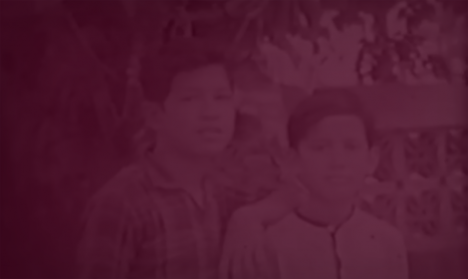
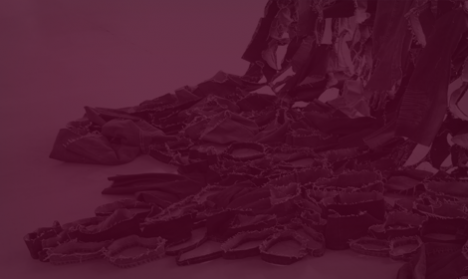
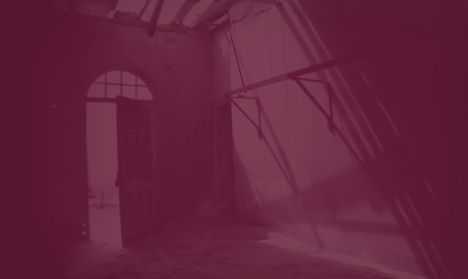
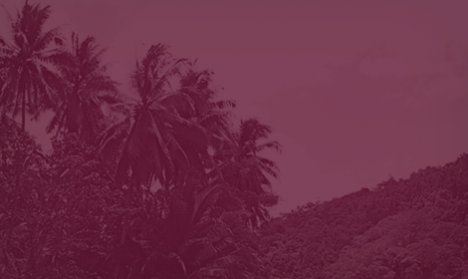
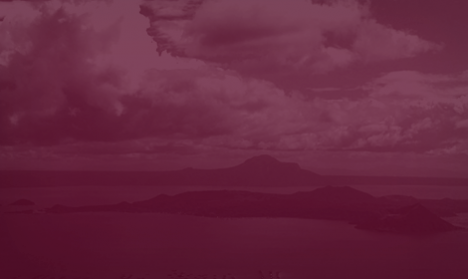
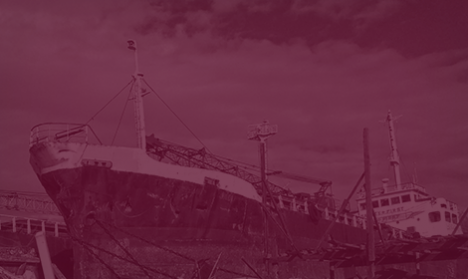
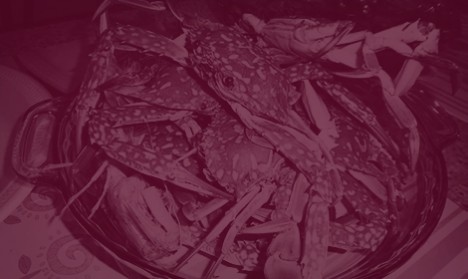


















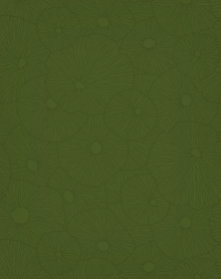


.jpg)
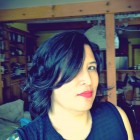
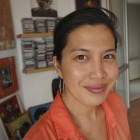



.jpg)
.jpg)
.jpg)

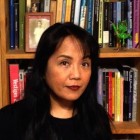
.jpg)
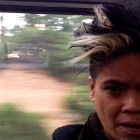
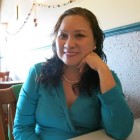



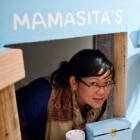

.jpg)
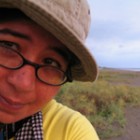
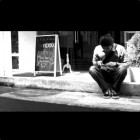

.jpg)

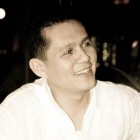
.jpg)
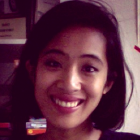
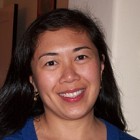

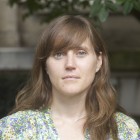
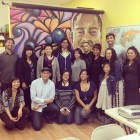
_Cropped.jpg)

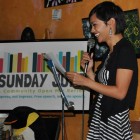
.jpg)
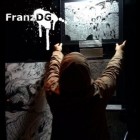

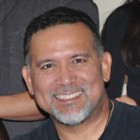
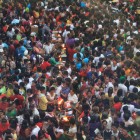

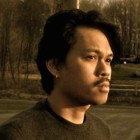
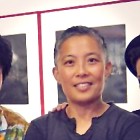
.jpg)
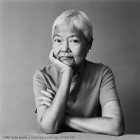
.jpg)
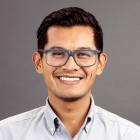

.jpg)
.jpg)
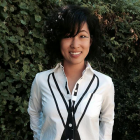

.jpg)
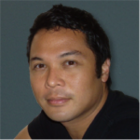

.jpg)




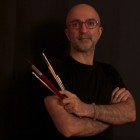



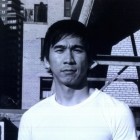
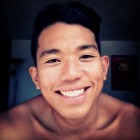
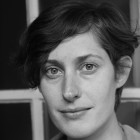
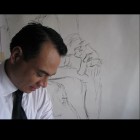
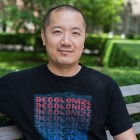
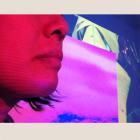

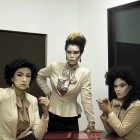
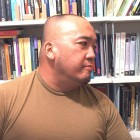
.jpg)

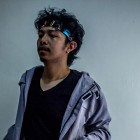

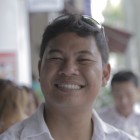


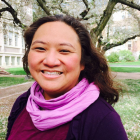



.png)



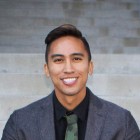
.jpg)
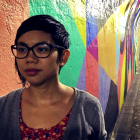
.jpg)
.jpg)
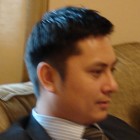
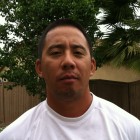
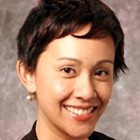
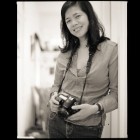
.jpg)
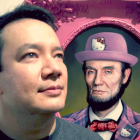
.jpg)
.jpg)

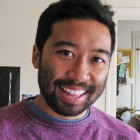

.jpg)
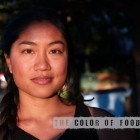
.jpg)


.jpg)

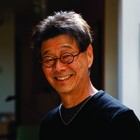
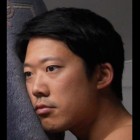
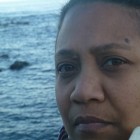

.jpg)

